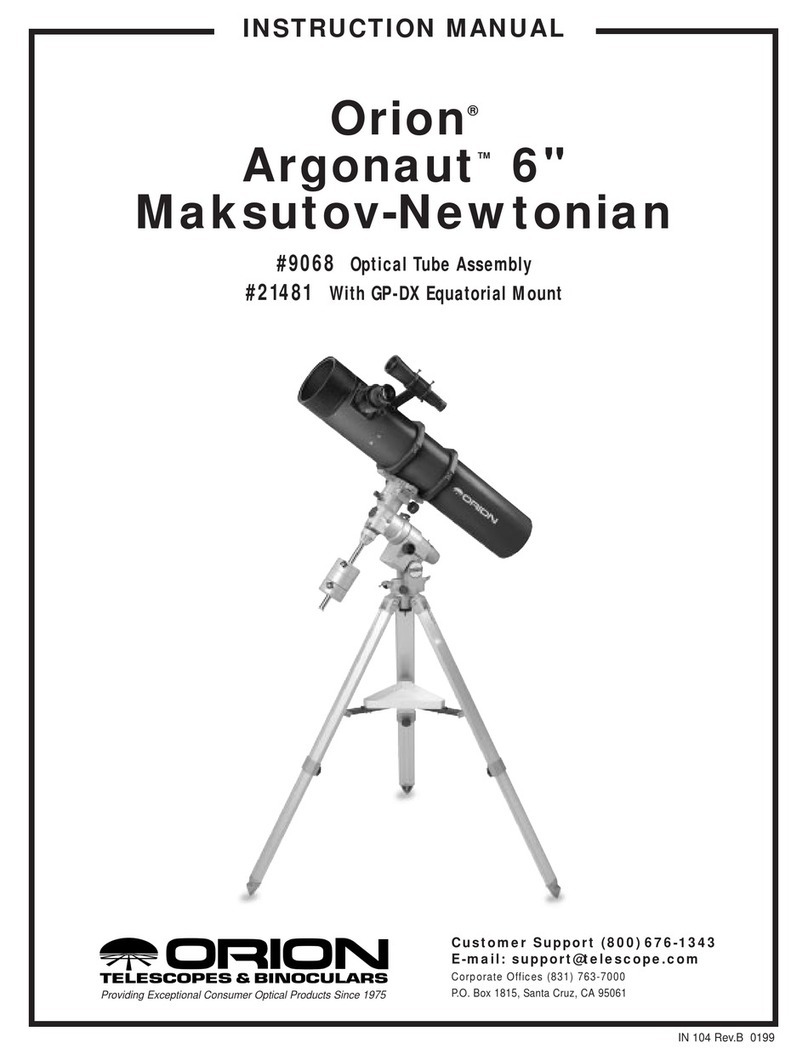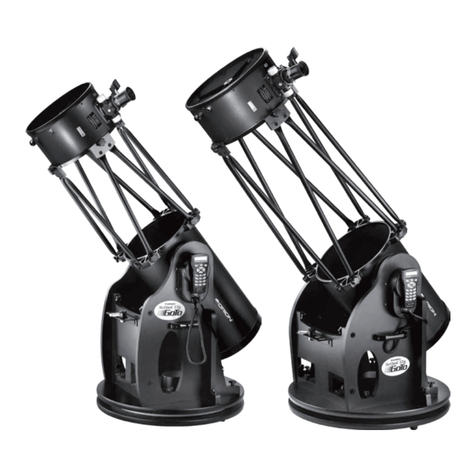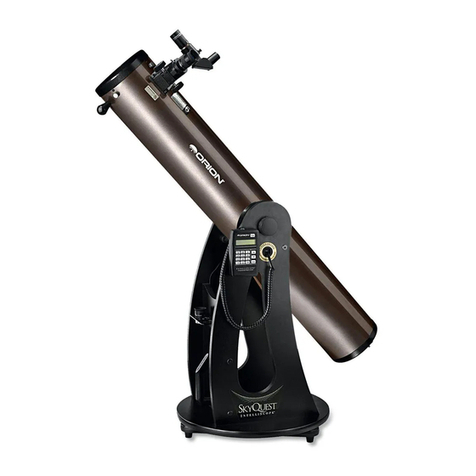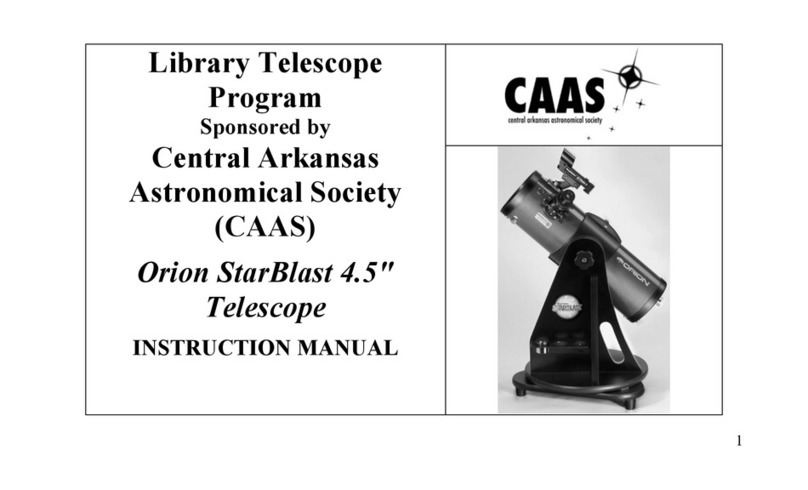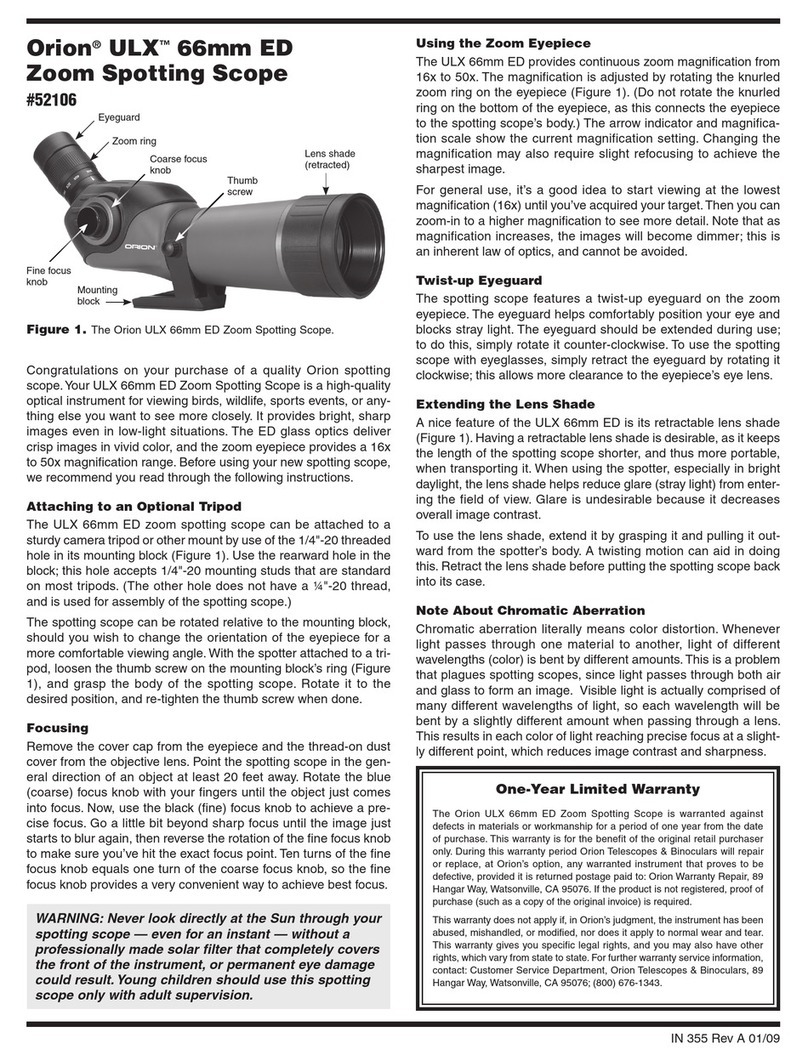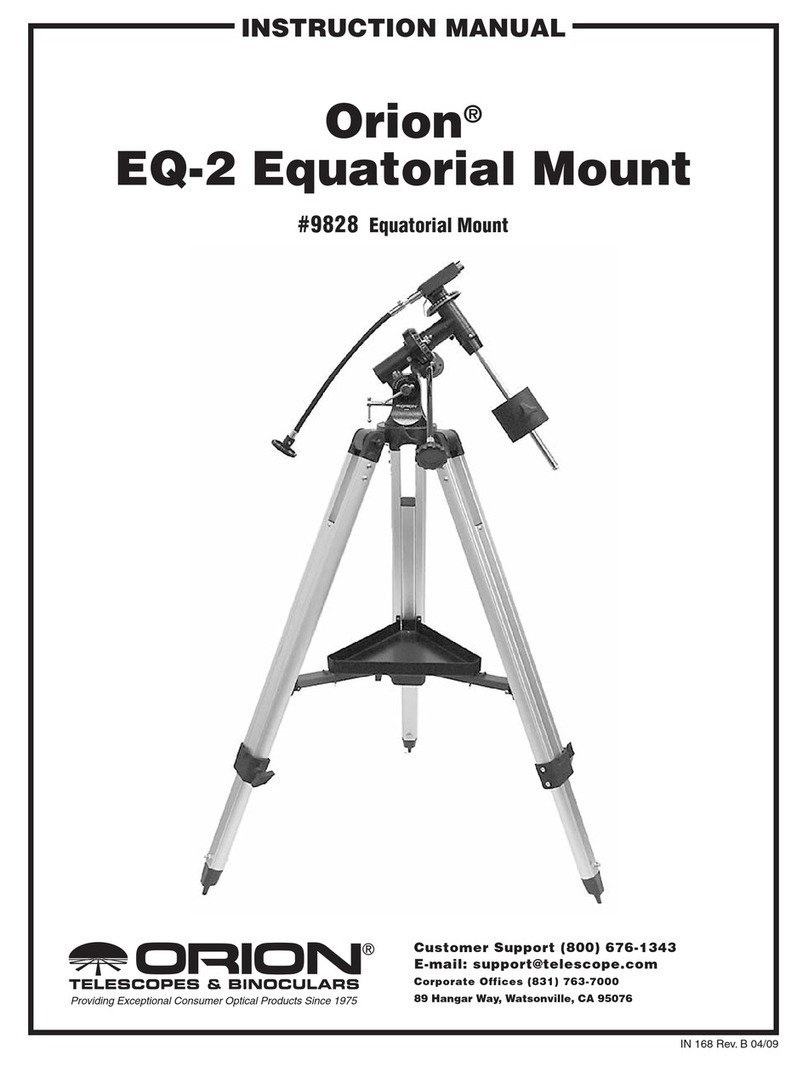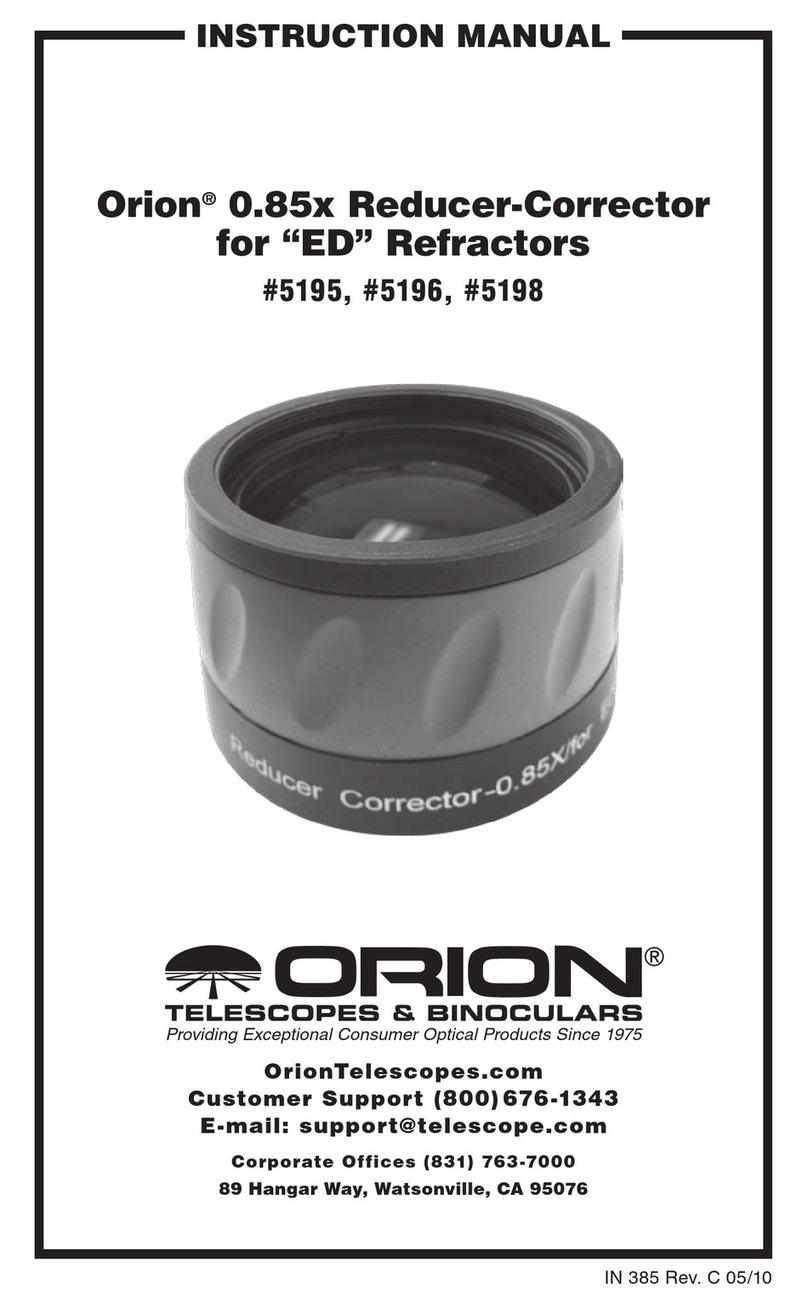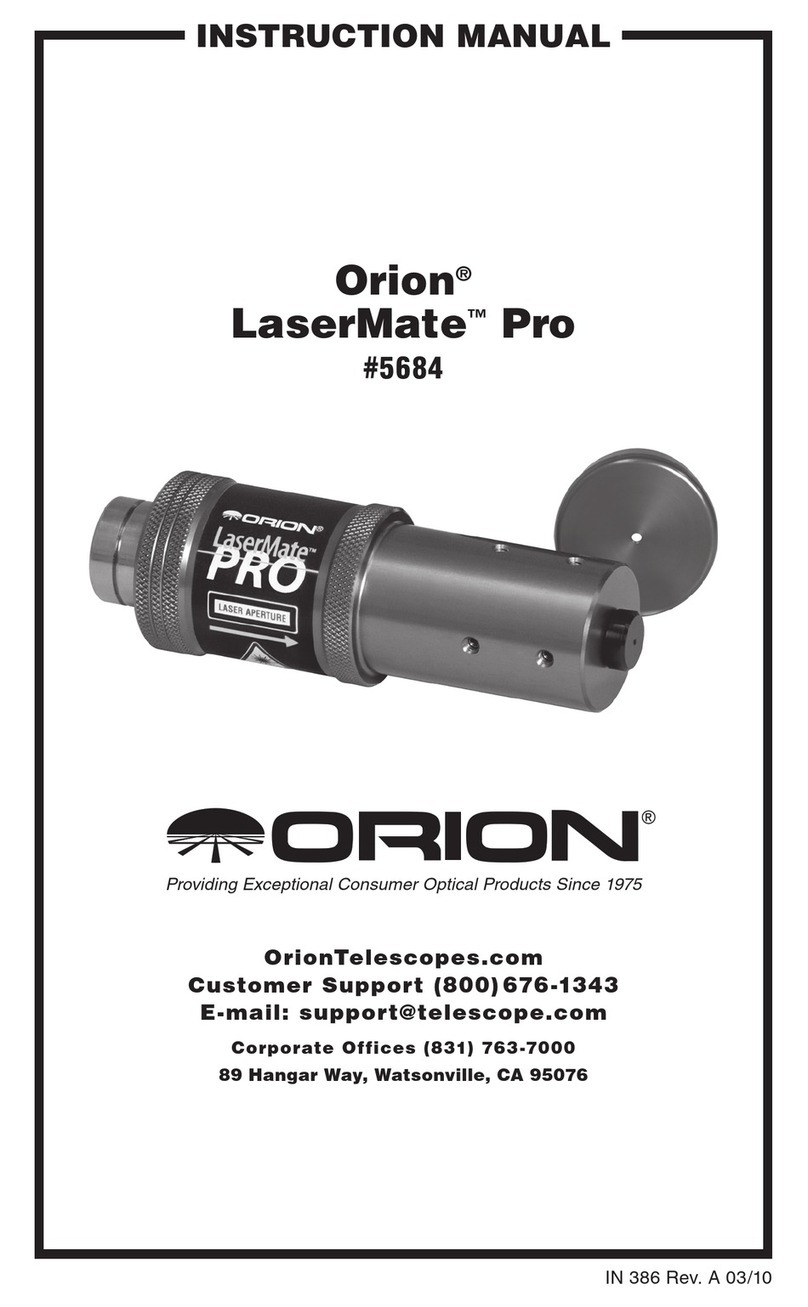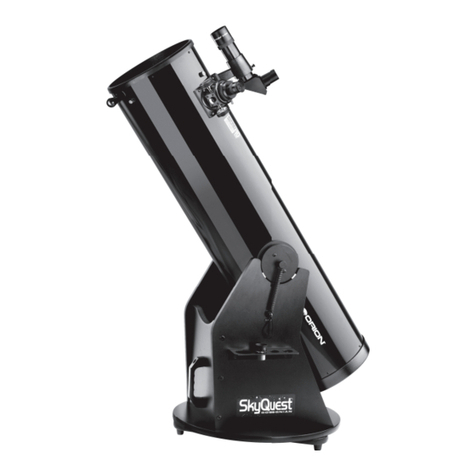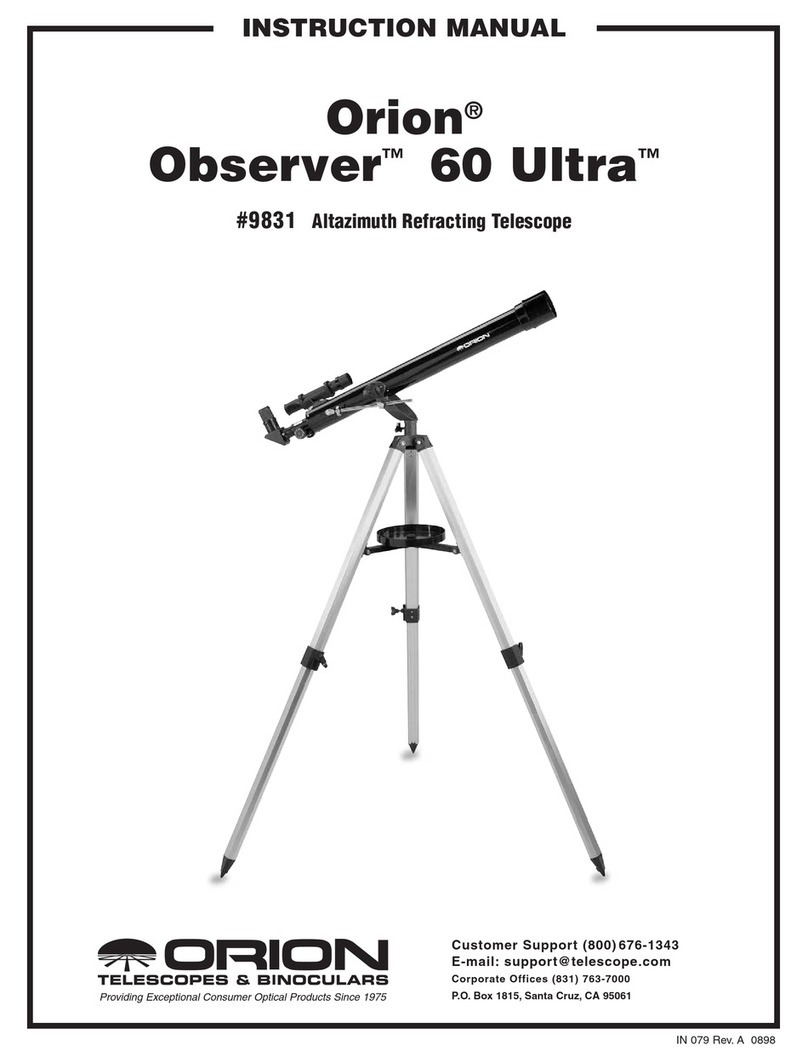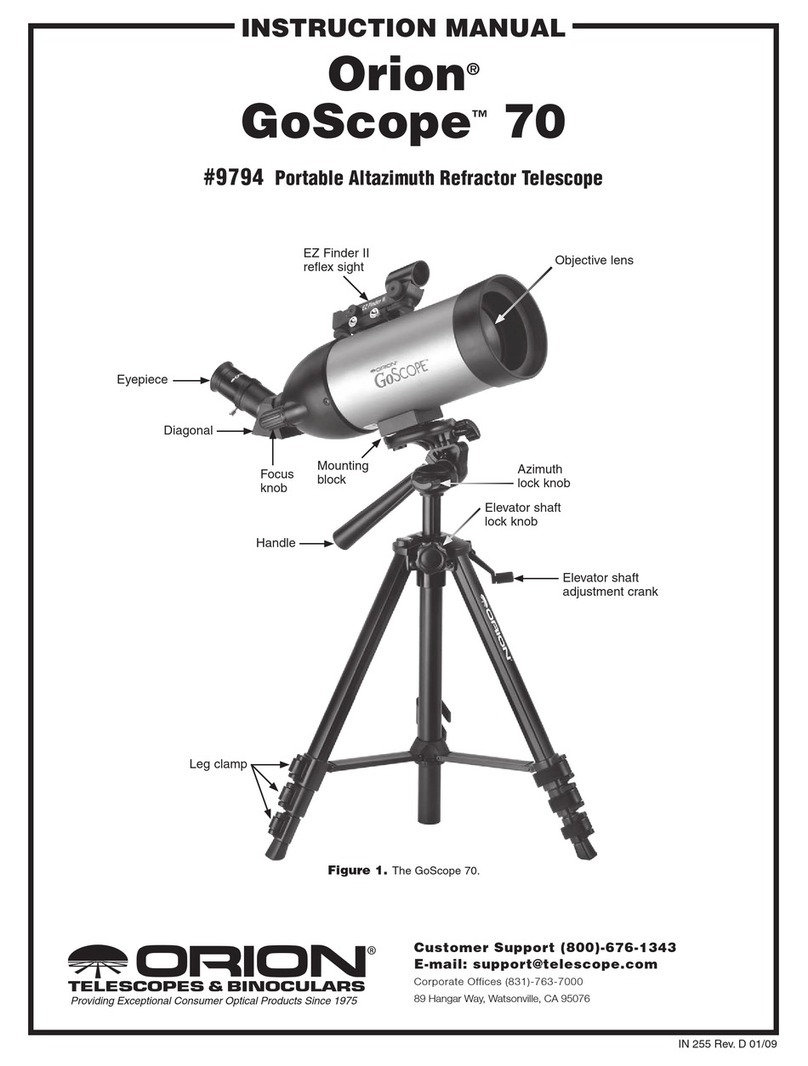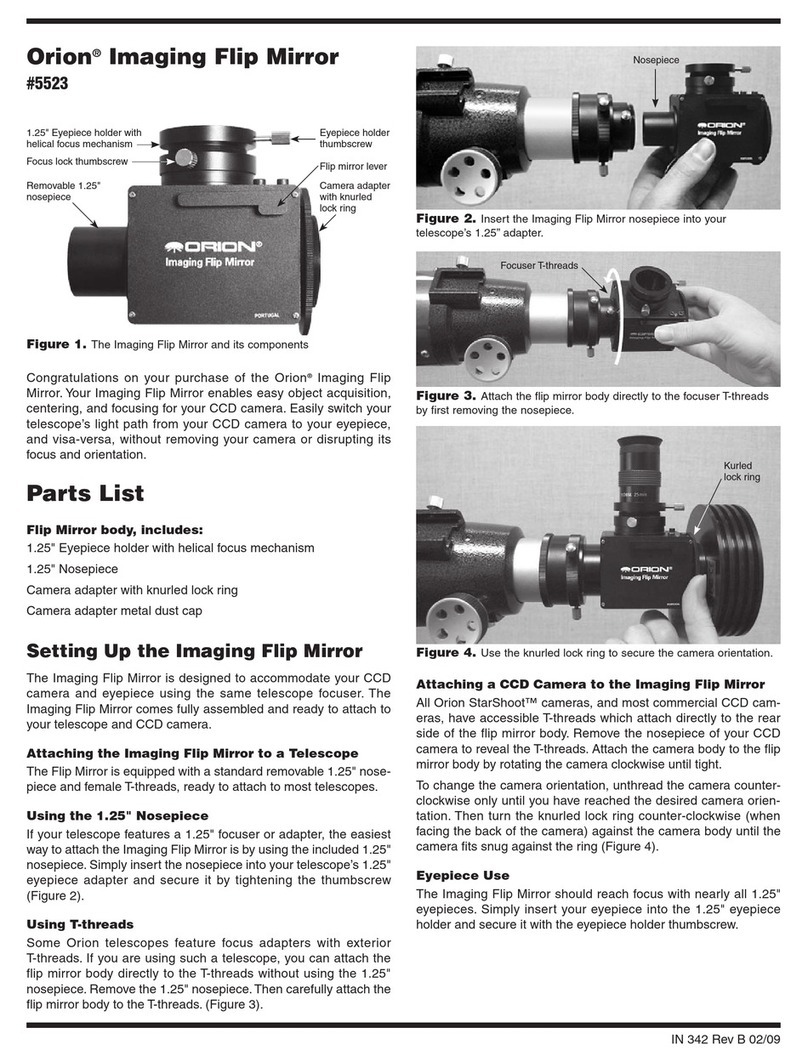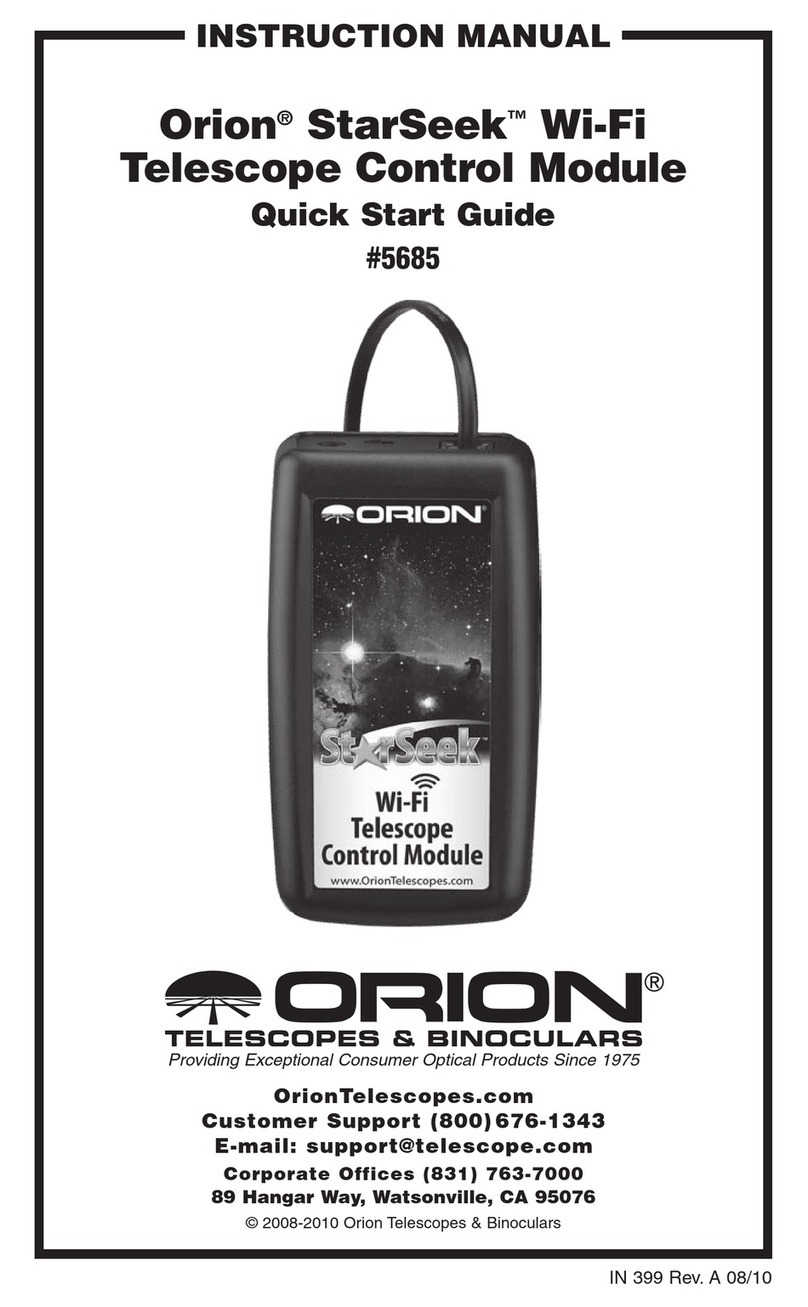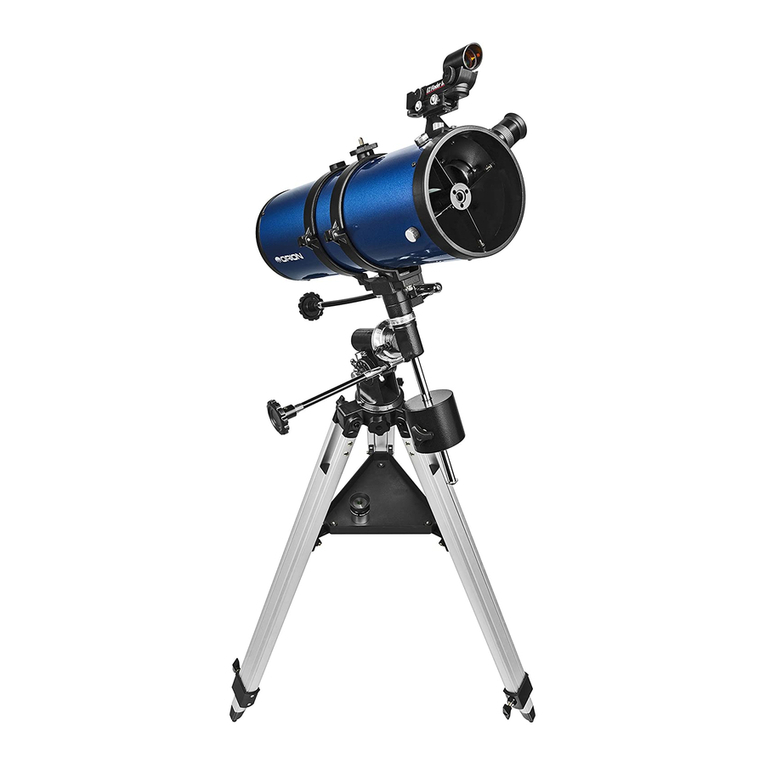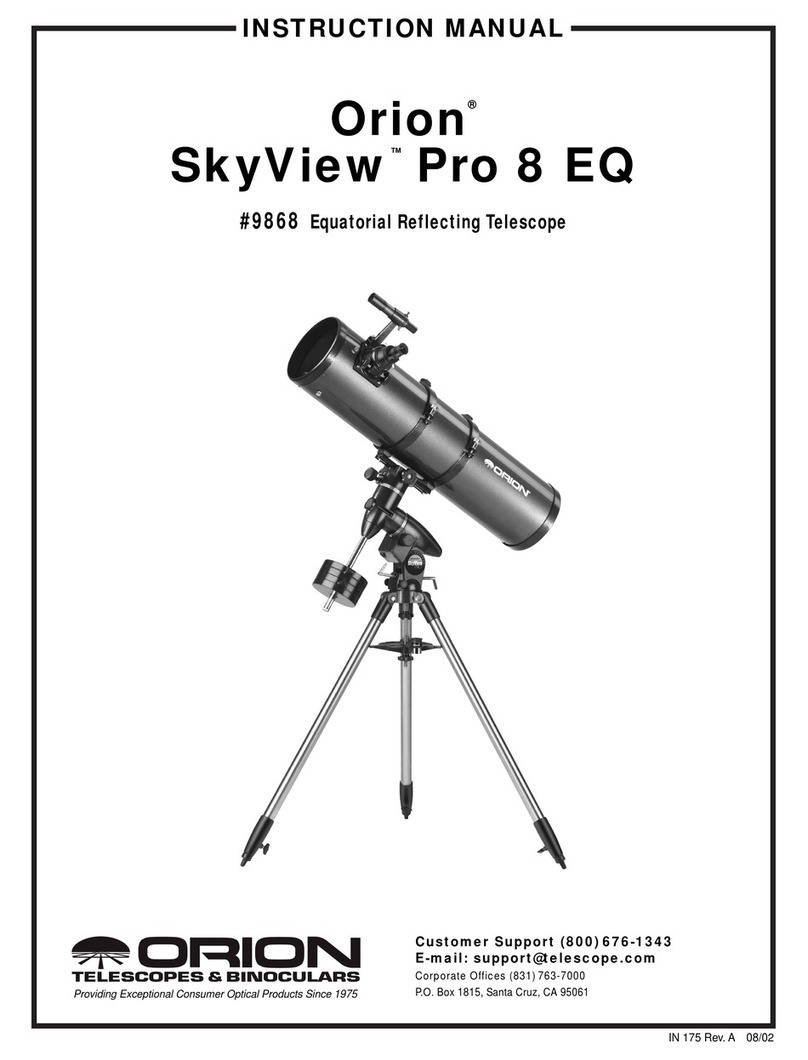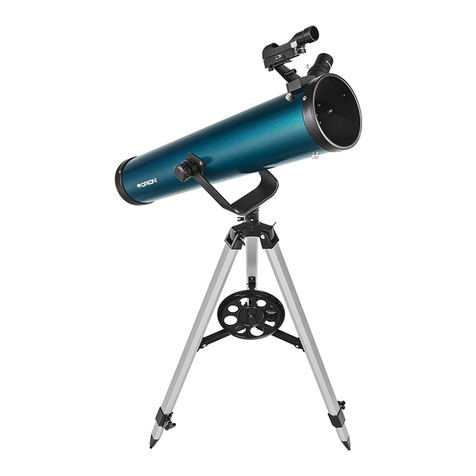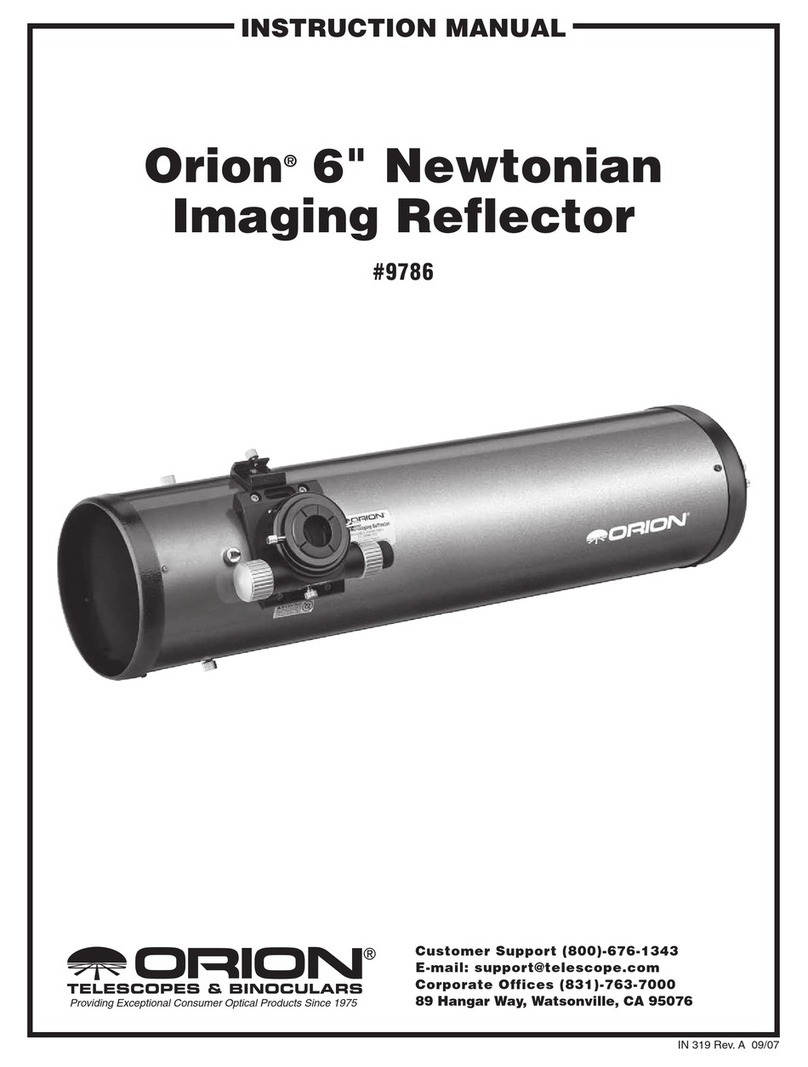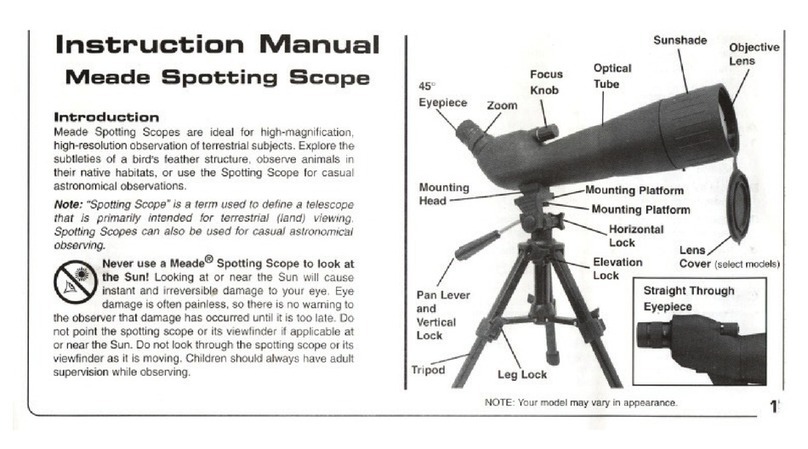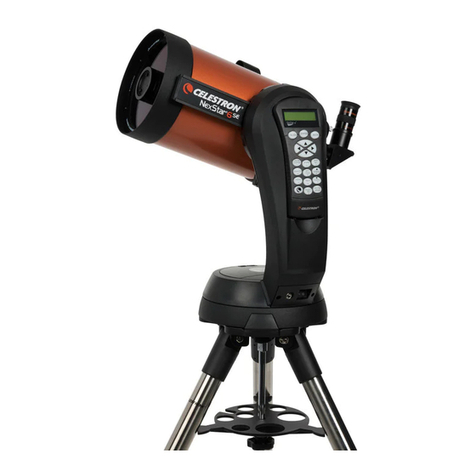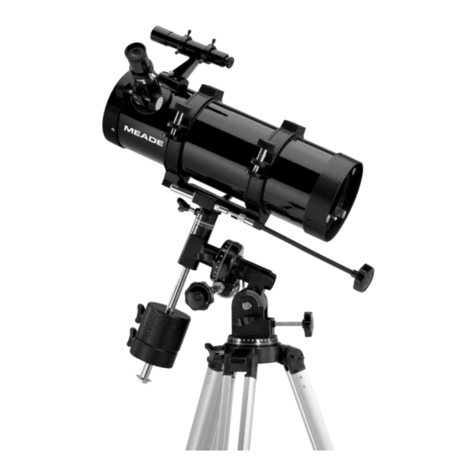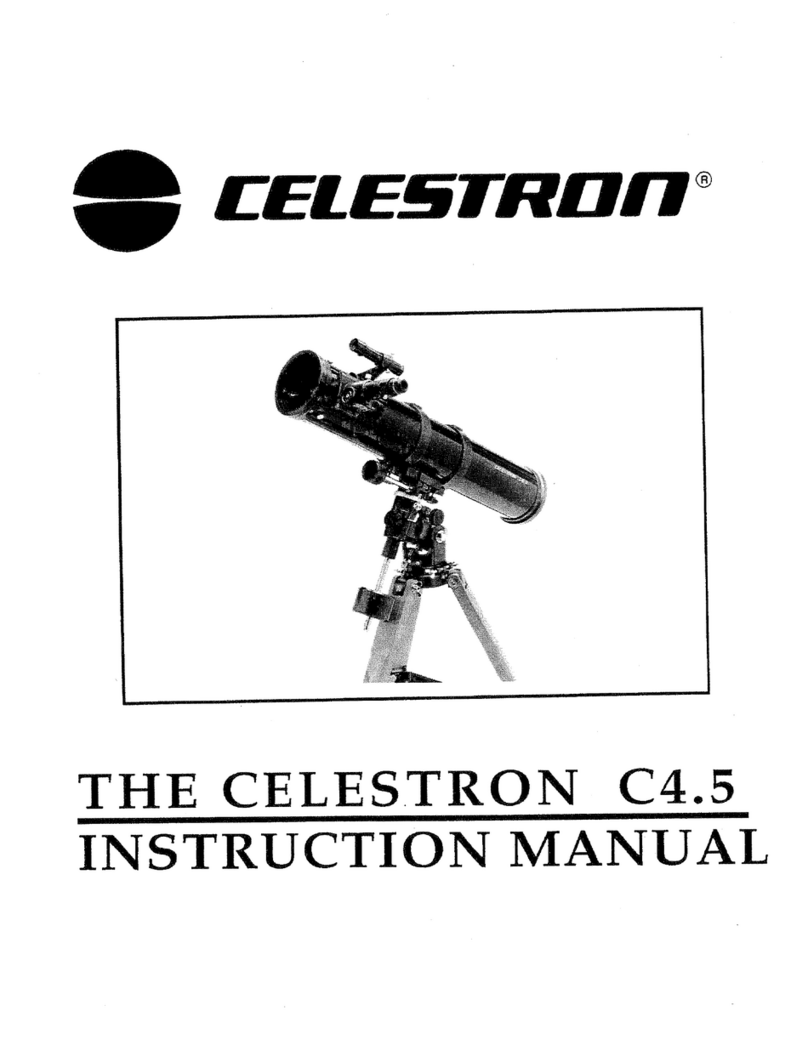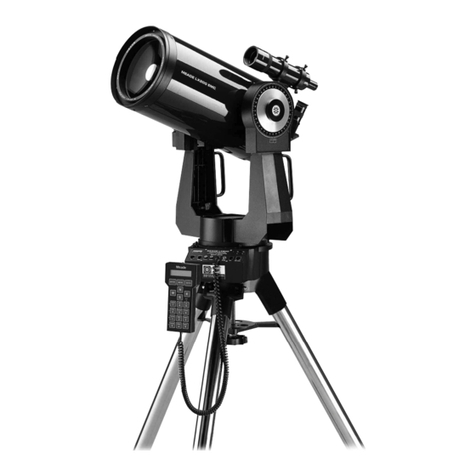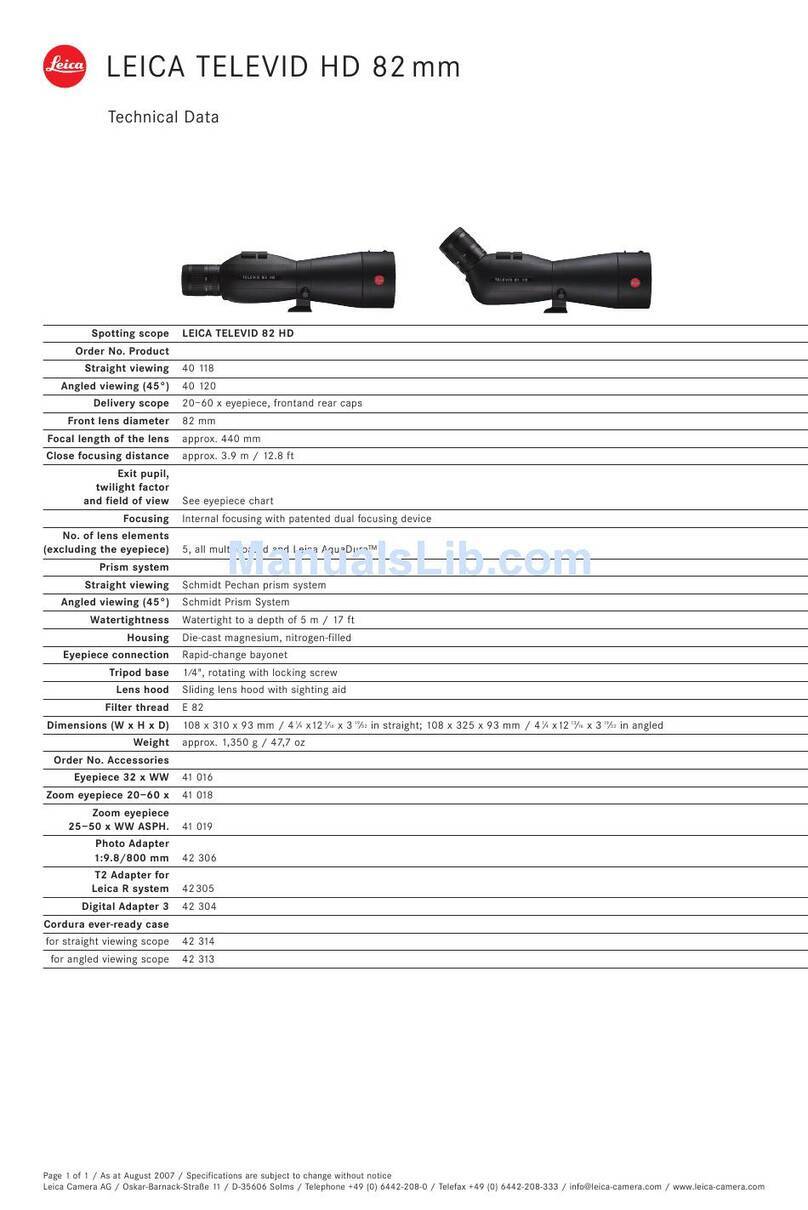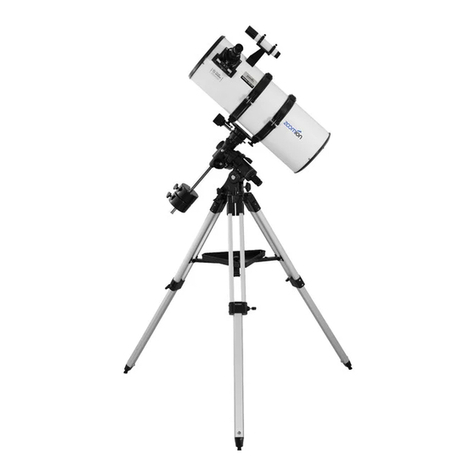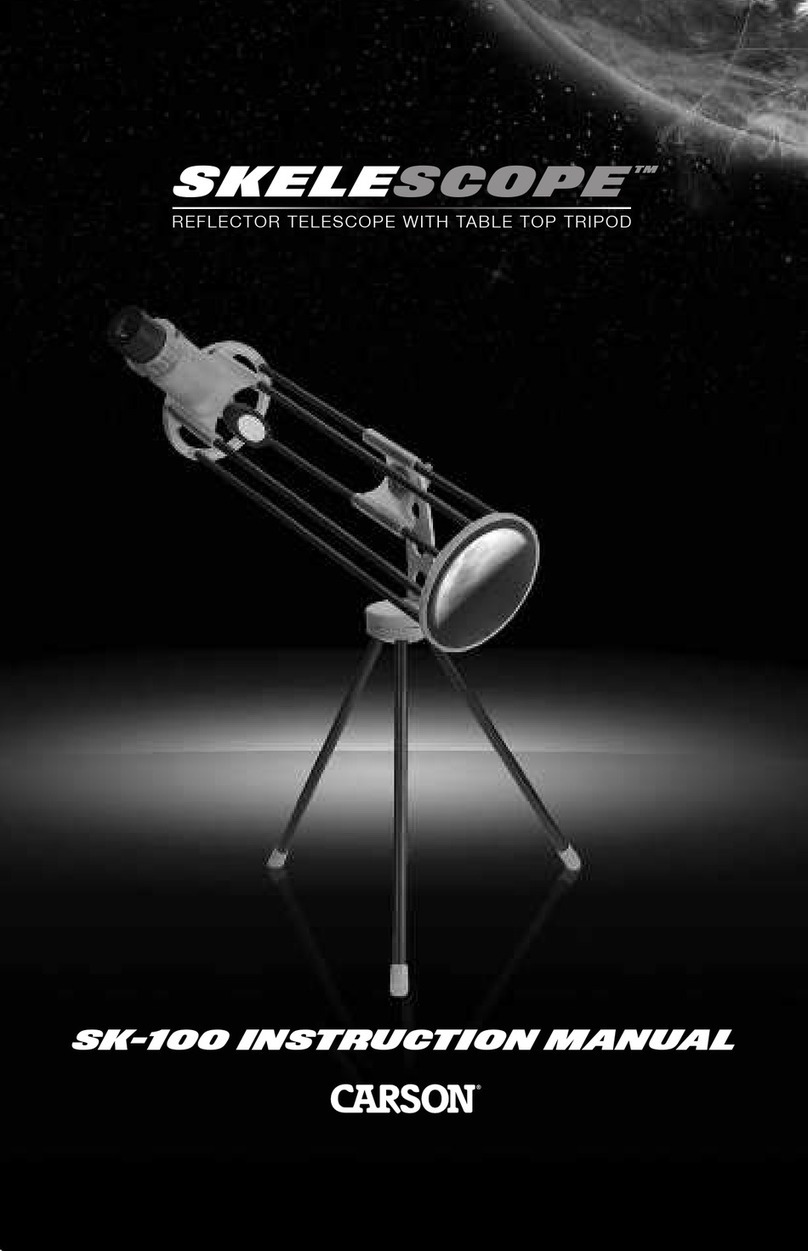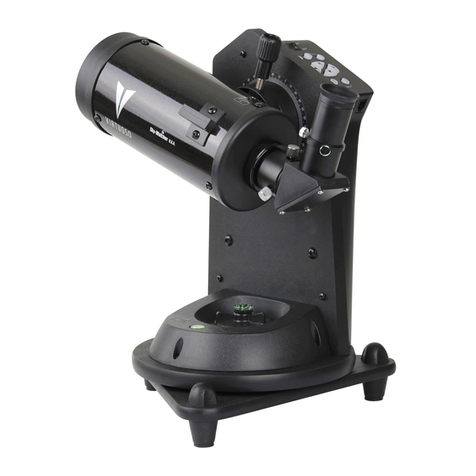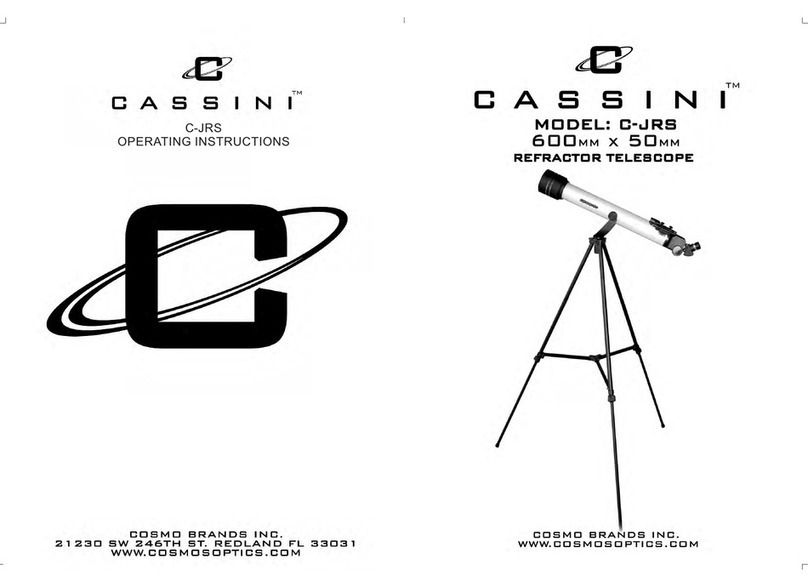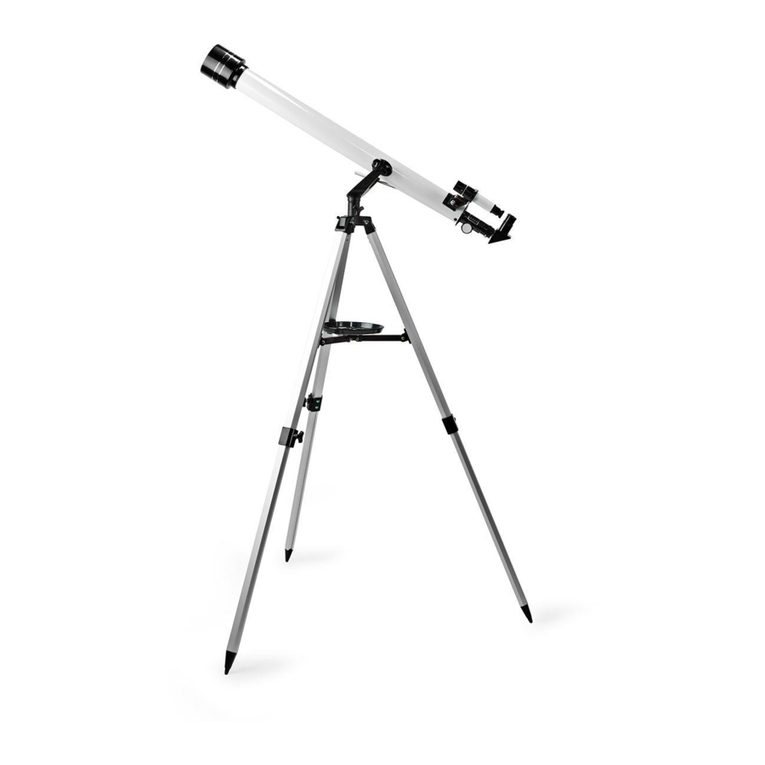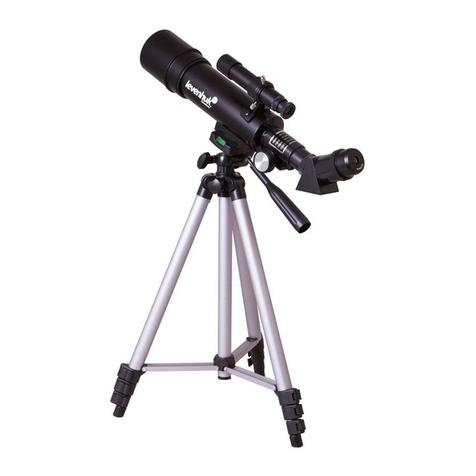
9
You wouldn’t be able to nd a new city without a map, so how
do you nd a new object in the sky? Use a planisphere and/or
a star map; Orion offers several. To nd an object, rst locate
it on the map and note its position relative to several bright
stars. Then nd the bright star with your unaided eye and
“hop” from star to star to where the object should be located.
We also recommend you check out Orion’s Community web-
page for videos and articles on how to nd objects in the sky
and how to use star charts and planispheres.
The GoScope III 70mm includes a rugged backpack for taking
the telescope, tripod, and all accessories with you wherever
you go (Figure 14). So get out there and enjoy the views!
5. Useful Optional
Accessories
• Moon Filter – A 1.25” Moon lter will cut down the strong
glare of sunlight reected from the Moon, making Moon
viewing more comfortable and revealing more surface
detail. The lter threads into the bottom of the Kellner eye-
pieces that came with your telescope.
• Barlow Lens – A 2x Barlow lens doubles the magnify-
ing power of any eyepiece it’s used with, giving you a big
power boost to get in closer to your target object. You just
insert it between the diagonal and the eyepiece.
• Planisphere – A nifty “star wheel” that shows what stars
and constellations are visible in the sky at any time of any
night. Just set the date and time see a mini representation
of your local night sky. Great for identifying what you see
and planning an evening’s observing session.
• Star Map – More detailed than a planisphere, a star
map is essential for locating interesting celestial objects
to observe with your telescope. Nowadays many mobile
astronomy apps feature customizable star maps that you
can access on your smartphone or tablet while you’re at
the telescope.
6. Telescope Care and
Maintenance
If you give your telescope reasonable care, it will last a lifetime.
Store it in a clean, dry, dust-free place, safe from rapid changes
in temperature and humidity. Do not store the telescope out-
doors, although storage in a garage or shed is OK. Small compo-
nents like eyepieces and other accessories should be kept in a
protective box or storage case. Keep the dust cover on the front
of the telescope when it is not in use.
Your refractor telescope requires very little mechanical mainte-
nance. The optical tube has a smooth painted nish that is fairly
scratch-resistant. If a scratch does appear on the tube, it will not
harm the telescope. If you wish, you may apply some auto touch-
up paint to the scratch. Smudges on the tube can be wiped off
with a soft cloth and household cleaning uid.
Cleaning Optics
Any quality optical lens cleaning tissue and optical lens cleaning
uid specically designed for multi-coated optics can be used
to clean the lenses of your telescope and eyepieces. Never use
regular glass cleaner or cleaning uid designed for eyeglasses.
Before cleaning, remove any loose particles or dust from the lens
with a blower bulb or soft brush. Then apply some cleaning uid
to a tissue, never directly on the optics. Wipe the lens gently in
a circular motion, then remove any excess uid with a fresh lens
tissue. Oily ngerprints and smudges may be removed using this
method. Use caution; rubbing too hard may scratch the lens. On
larger lenses, clean only a small area at a time, using a fresh
lens tissue on each area. Never reuse tissues.
When bringing the telescope inside after an evening’s viewing
it is normal for moisture to accumulate on the lenses due to the
change in temperature. We suggest leaving the telescope and
eyepieces uncovered overnight to allow the condensation to
evaporate.
7. Specifications
Objective lens: 70mm (2.8") diameter, achromatic
Effective focal length: 400mm
Focal ratio: f/5.7
Lens coatings: Antireection coated
Focuser: Rack-and-pinion, accepts 1.25" accessories
Eyepieces: 20mm and 9mm Kellner, antireection coated,
1.25" barrel diameter, threaded for Orion lters
Eyepiece magnication: 20x (with 20mm eyepiece) and 44x
(with 9mm eyepiece)
Finder scope: 5x24 achromatic
Mount: Altazimuth, pan head
Tripod: Aluminum
Telescope tube length: 14"
Tripod length, collapsed: 18"
Tripod height, minimum: 17-3/4"
Tripod height, maximum: 43-1/2"
Backpack dimensions: 17" high x 11" wide x 6" deep
Total weight, including backpack: 4 lbs., 4 oz.
